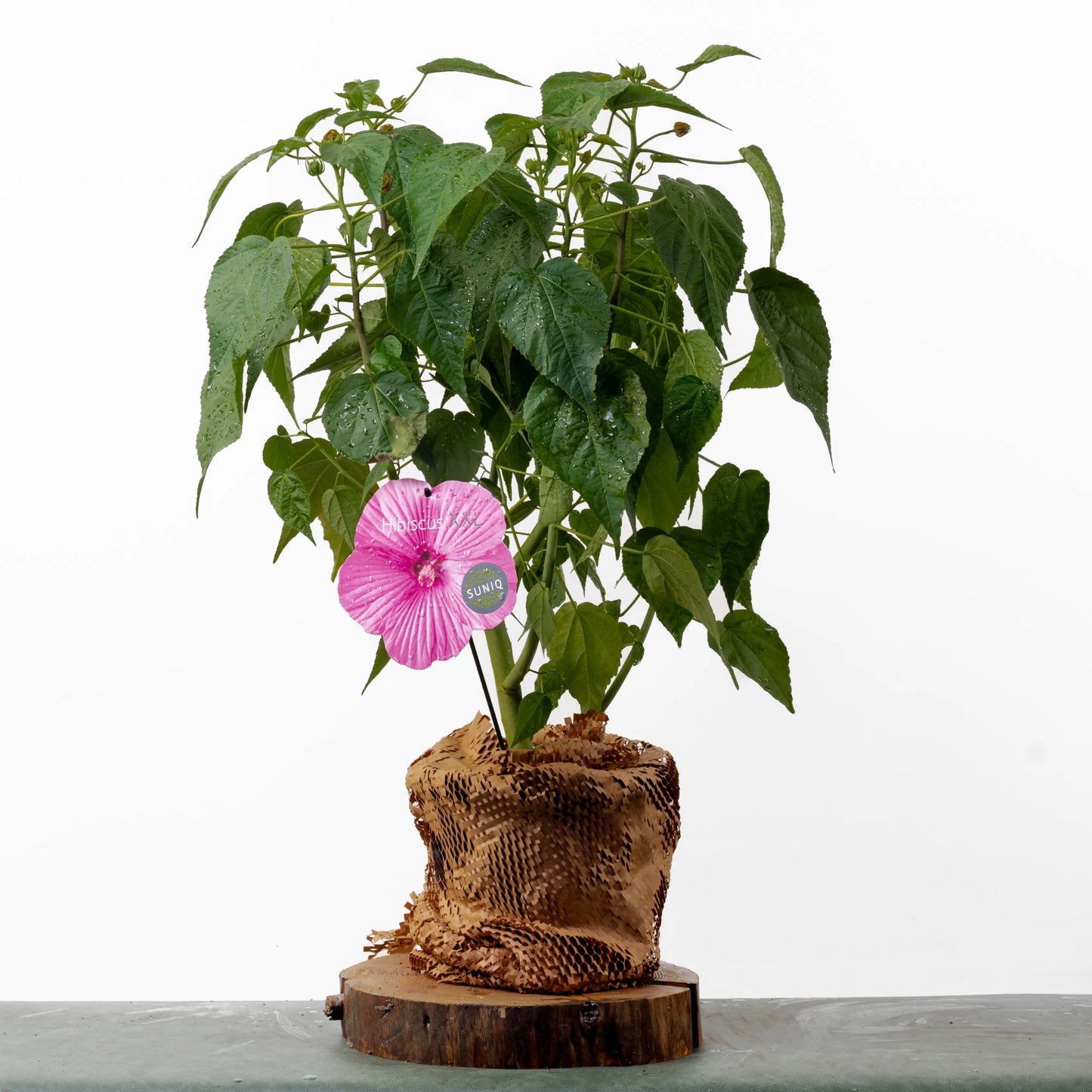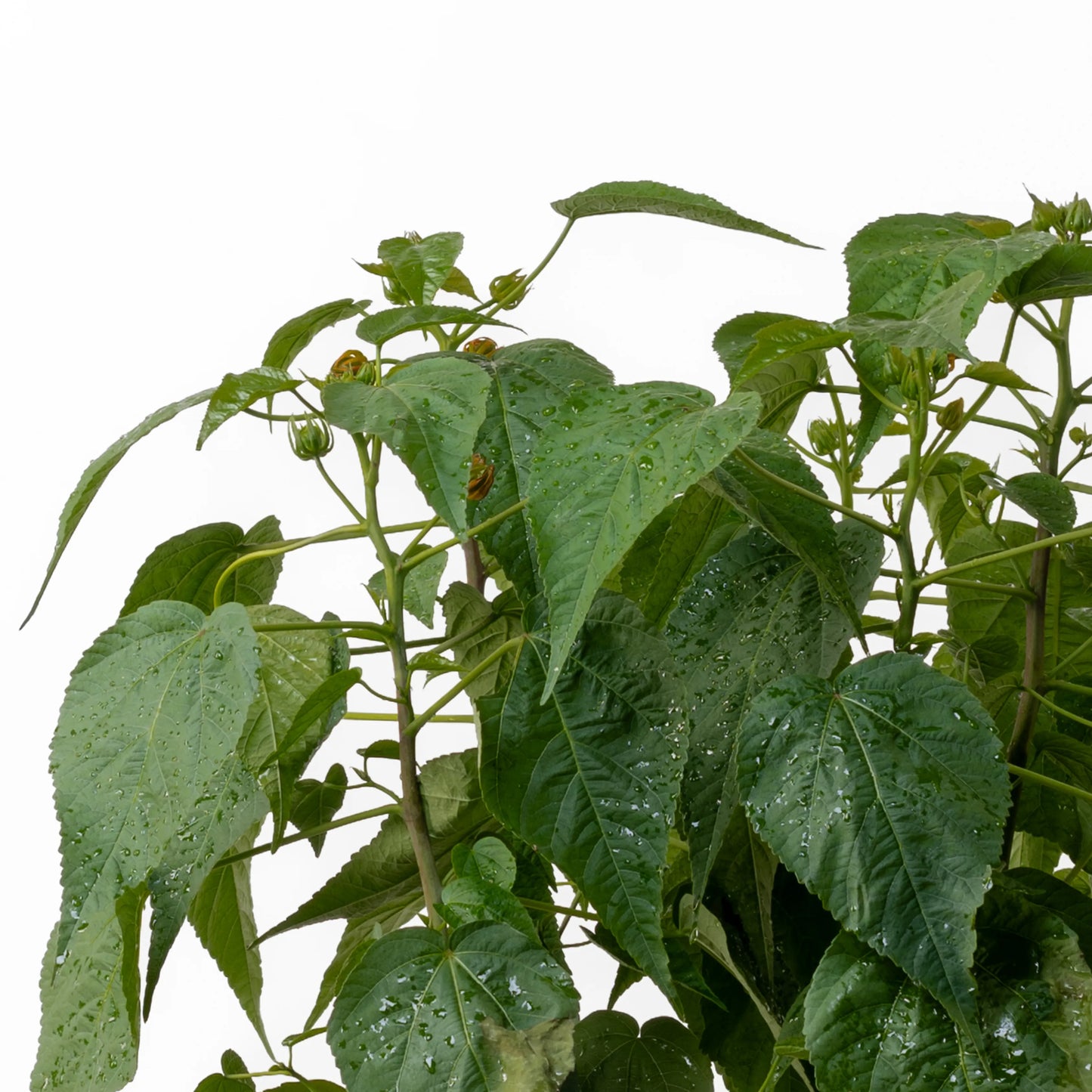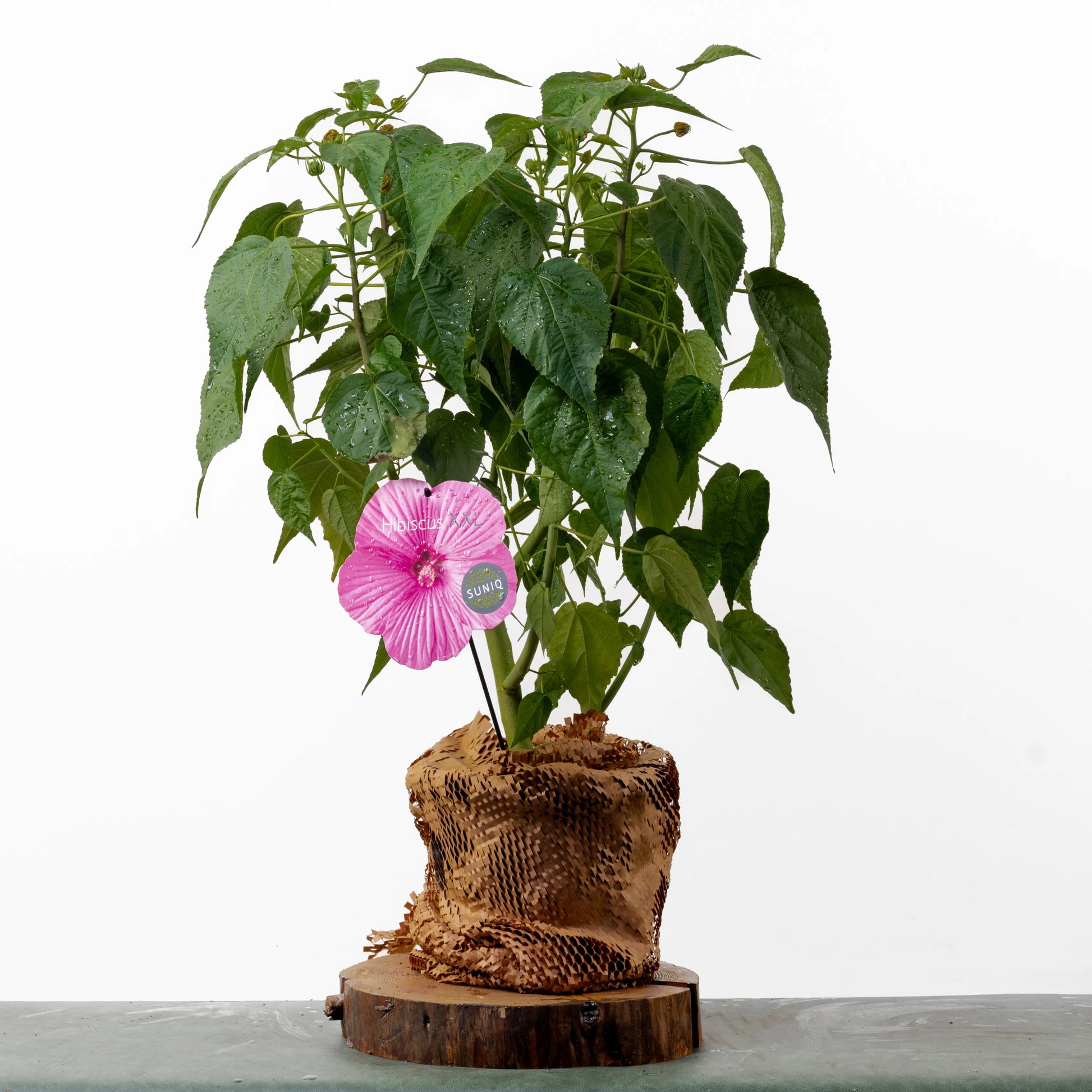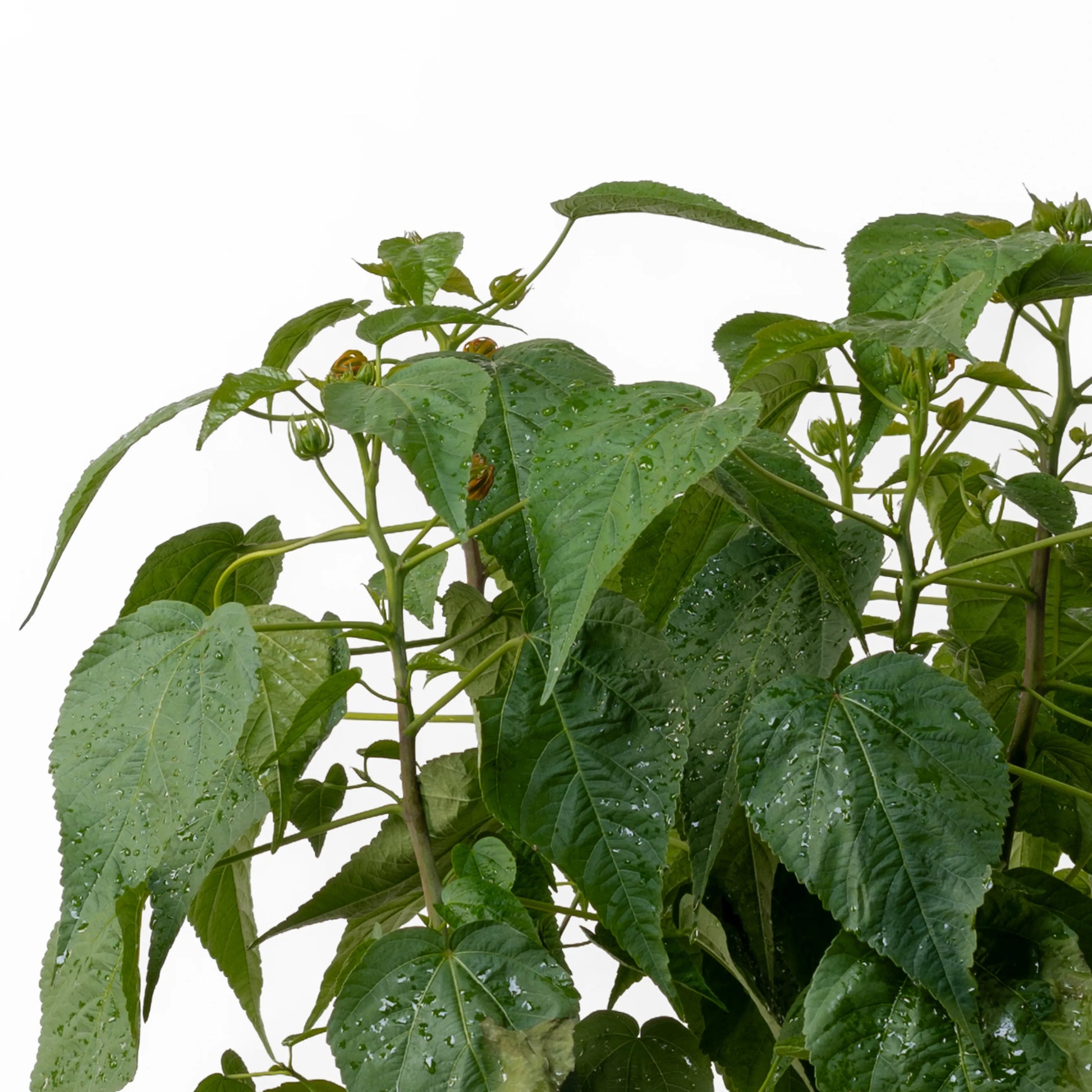Hibiscus
Hibiscus
Couldn't load pickup availability
Also known as: Tropical Hibiscus, Chinese Rose
The magnificent hibiscus bush is an ornamental and rustic plant that is extremely popular in Brazilian gardens, but it is not only famous here, as it is also the symbolic flower of Hawaii! In addition, the hibiscus has an important religious significance for some people, being used in ceremonies for Hindu gods and the orishas of the Yoruba.
Difficulty Care
Difficulty Care
Easy
Ideal Temperature
Ideal Temperature
Most hibiscus plants are relatively cold hardy, tolerating temperatures as low as 0°C, and are also relatively drought resistant. Chinese hibiscus (Hibiscus rosa-sinensis) and its hybrid varieties thrive in warm environments and are generally unable to adapt to cold temperatures. Temperatures of at least 10°C are ideal in winter for most hibiscus plants. The ideal temperature for Chinese hibiscus is 60-90°C, and the species is not drought resistant.
Watering
Watering
Originating from the warm, humid climates of tropical regions, hibiscus thrives in environments that mimic the humidity levels of its native habitat. This species is known for its preference for consistent moisture and moderate drought tolerance. Watering should be adjusted to once every 1-2 weeks, allowing the soil to dry slightly between waterings.
Light
Light
Hibiscus thrives in full sunlight conditions, requiring at least 6 hours of direct sunlight for optimal growth and flowering. Although it tolerates partial light, too little light can result in spindly plants, less vigorous growth, and fewer flowers. Hibiscus has evolved leaf adaptation mechanisms to maximize light absorption without sustaining damage. When grown outdoors, hibiscus should be placed in a location that ensures abundant exposure to daylight. For indoor growing, a position near a south-facing window where it can receive abundant light is ideal. Consistent light exposure is crucial to maintaining vibrant health and flowering of hibiscus.
Soil
Soil
Hibiscus likes slightly acidic, moist and well-drained soil with a pH value of 5.5-7. If the soil is sticky and heavy, coarse sand can be added to improve permeability. In the case of slightly alkaline soil, calcareous and chalky soil, add rotted leaf soil, peat moss or thoroughly decomposed garden compost together with sulfur fertilizer until the pH value reaches a suitable range.


Other Information
For optimal growth, hibiscus requires a balanced fertilizer rich in nitrogen, phosphorus, and potassium. Fertilize monthly during active growth in spring and summer, reducing to every other month in fall and less frequently in winter. Use a water-soluble formula, following package directions for dilution rates to avoid overfertilization.


